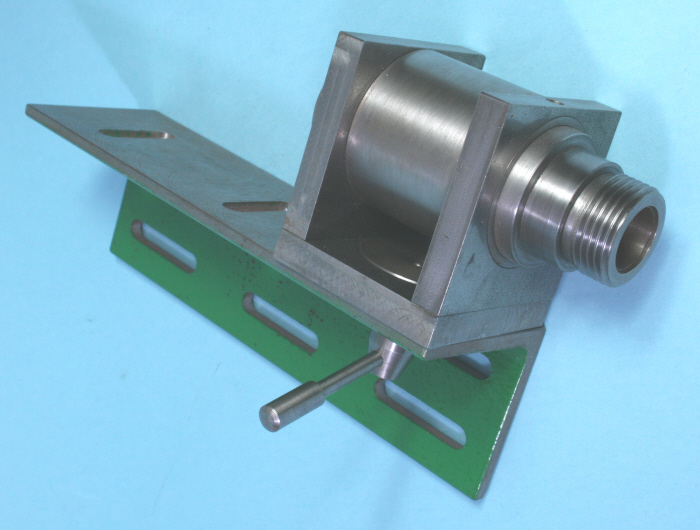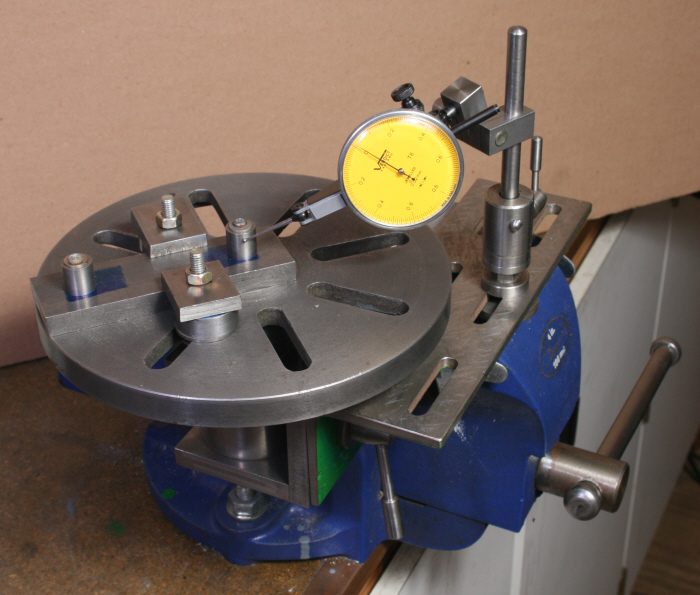OK....here we go first the spot facing tool....no drama here
Starting with annealled 0-1 tool steel 3/8" diameter.
The pilot is .125" The spot face diameter is .250...there is a relief between the diameters made by my parting tool.
Next I mounted the part in the mill vice and milled the one side down until I just touched the pilot diameter...no measurement here...just keep adding to the depth until you see the side of the pilot get touched.
Now we want to cut the side opposite the same way. To do this I loosened the vice and rotated the part by hand approximately 180 degrees. Then I layed a 6" scale against the side I just machined and rotated the part until the scale was visually parallel with the mill table....precision eyeball only here, and then made the same cut at the same depth. The result is as below
Next I took a half round file and put a back rake on the two cutting lips about 15 degrees....eyeball-a-metric.
Note the direction of rotation! don't cut the wrong side!
Next I put the embrionic spot facing tool into the drill press and started it. I then heated the cutting end with a torch until it was bright red...while the spindle was turning. Once I got to bright cherry red...I plunged red hot rotating tool into oil with the rotating quill. The result is a very hard tool!
I decided that this tool did not need tempering and decided to try it as is.....and it cut very nicely.
OK that done, I decided that I would work the timing gear case....here it is mounted and into the first operation.
I then drilled undersize and bored the center to 0.438"
OK....next is to clean up the inside next to the gear....there was a little core corner crumble....so I figuired I would just flip the part and hold it on the 3/4" diameter in a collet. time to change the faceplate for the collet chuck.
You have a piece of plywood to cover the ways on your lathe when you change chucks........RIGHT!? ;D
Next it was a simple job to face the part back to the .4375 dimension and lightly bore the center to clean it up....
If you don't have a collet chuck, A 4 jaw will do here....if you use a 4 jaw....put some pop can aluminum around the finished part to keep the jaws from marring the work.
Nice nights work!
Dave


















